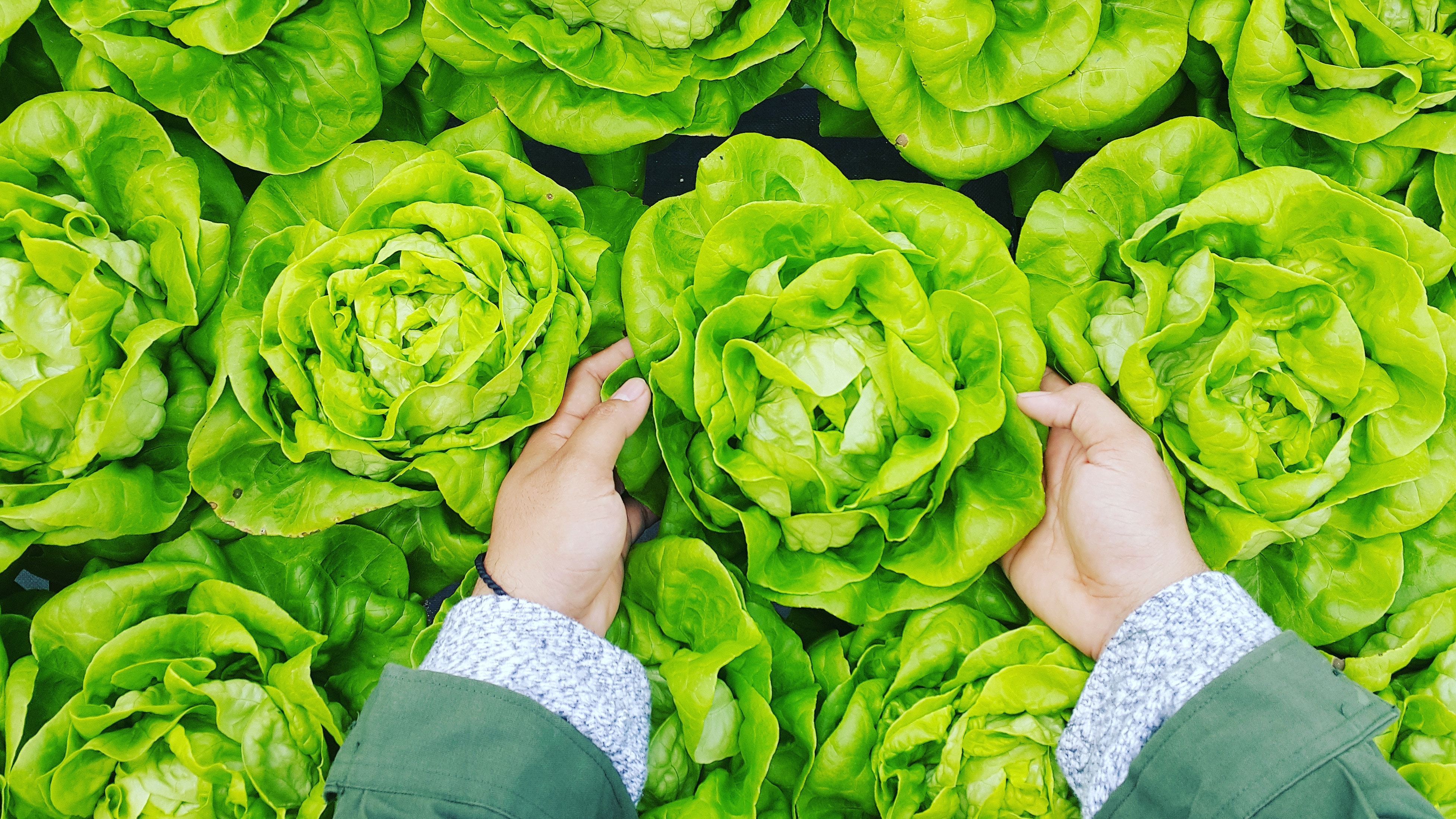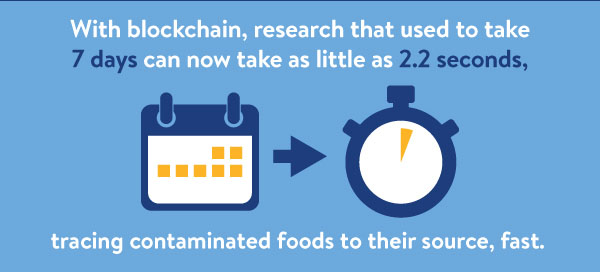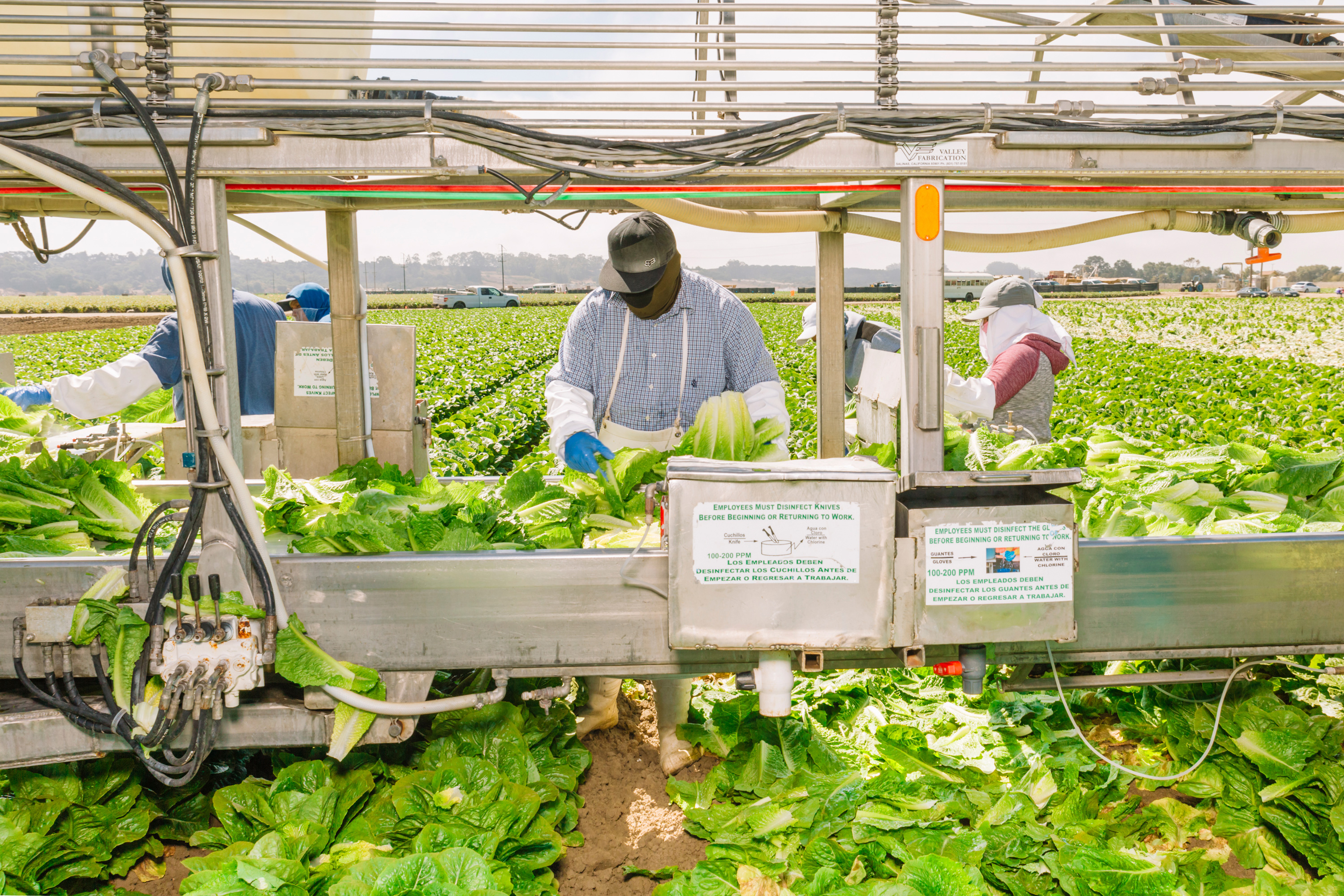Is the Future of Food Blockchain?

It seems like every week there is a new food scare. Walmart is trying to fix this using Blockchain!

It seems like every week there is a new food scare. Each time, grocers like Walmart pull all related products out of the shelves: “Guilty until proven innocent” according to Frank Yiannas, President of Food Safety at Walmart [1]. Only after the implicated product is found will the safe products be put back. This requires tracing back the exact origin of the food and each touch point in the supply chain. For a cup of cut mangos, that took 6.5 days. By which time a lot of the pulled food will have spoiled, and consumers have lost trust in the grocer and the product.
A solution in sight
As a solution to this Walmart and IBM are working together using Blockchain software called IBM Food Trust. According to IBM: “The solution provides authorized users with immediate access to actionable food supply chain data, from farm to store and ultimately the consumer. The complete history and current location of any food item along with its accompanying information (i.e. certifications, test data, temperature data) can be readily available in seconds.” [2]. The way it works is that each member organization of the supply chain has a ledger with their transaction information on the blockchain network. When a piece of permissioned information is entered into the chain, other computers in the network are notified, thereby keeping a single “true” record and making falsifying information extremely hard to do.
This will allow Walmart to track food in seconds rather than in days. This plays into two key strategies Walmart is pursuing: bolstering its digital savvy and emphasizing the quality of its fresh food to customers. [3] Critics have wondered whether this is anything more than a PR move to play into the hype surrounding blockchain, but Yiannas points out, the food system is absolutely too large for a single entity to track, but blockchain changes everything.

Trust is the key
Walmart and IBM claim that this will bring back customers’ trust in the food system, but Walmart will also have to convince suppliers to trust it. While Blockchain can lead to increased food safety, it also leads to an enormous amount of new information which Walmart previously did not have access too. At least not in a format it could do anything with.
Walmart started the blockchain roll out by requiring all leafy green vegetables [see above]. I think the real danger is that suppliers might fear Walmart and IBM over the power this transparency into the supply chain will give them. Having your end customer know where all your supply comes from might make you fear that your customer might cut you out completely. Or that they might use this to squeeze your margins.

Other considerations:
This network while providing larger food security and reduce food wastage, will also give Walmart full transparency into its supply chain. Should we, the customers, be concerned about this? Should suppliers to Walmart be concerned about this? What could Walmart do to soothe those concerns?
To what extend is it viable to bring every single supplier on this network? What are the technical and physical challenges Walmart, IBM and the suppliers will have to overcome?
(Word Count: 762)
[1] YouTube. (2018). Walmart’s food safety solution using IBM Food Trust built on the IBM Blockchain Platform. [online] Available at: https://www.youtube.com/watch?v=SV0KXBxSoio [Accessed 12 Nov. 2018].
[2] Www-01.ibm.com. (2018). IBM Food Trust Solution Brief 2.0. [online] Available at: https://www-01.ibm.com/common/ssi/cgi-bin/ssialias?htmlfid=89017389USEN [Accessed 12 Nov. 2018].
[3] Corkery, M. and Popper, N. (2018). From Farm to Blockchain: Walmart Tracks Its Lettuce. [online] Nytimes.com. Available at: https://www.nytimes.com/2018/09/24/business/walmart-blockchain-lettuce.html [Accessed 12 Nov. 2018].
[4] Corporate.walmart.com. (2018). [online] Available at: https://corporate.walmart.com/media-library/document/blockchain-supplier-letter-september-2018/_proxyDocument?id=00000166-088d-dc77-a7ff-4dff689f0001 [Accessed 12 Nov. 2018].
[5] Ibm.com. (2018). Freshness for IBM Food Trust™ – IBM Blockchain. [online] Available at: https://www.ibm.com/blockchain/solutions/food-trust/freshness [Accessed 12 Nov. 2018].
[6] Popper, N. and Lohr, S. (2018). Blockchain: A Better Way to Track Pork Chops, Bonds, Bad Peanut Butter?. [online] Nytimes.com. Available at: https://www.nytimes.com/2017/03/04/business/dealbook/blockchain-ibm-bitcoin.html?module=inline [Accessed 12 Nov. 2018].
[7] YouTube. (2018). Food Safety and Blockchain: Trust Through Transparency. [online] Available at: https://www.youtube.com/watch?v=CYJILzRKJmQ [Accessed 12 Nov. 2018].
[8] News.walmart.com. (2018). In Wake of Romaine E. coli Scare, Walmart Deploys Blockchain to Track Leafy Greens. [online] Available at: https://news.walmart.com/2018/09/24/in-wake-of-romaine-e-coli-scare-walmart-deploys-blockchain-to-track-leafy-greens [Accessed 12 Nov. 2018].



Do you think this same technology could be leveraged to do better inventory management, particularly around perishable goods? Understanding the entire supply chain seems very promising, and I think grocers could also use this data, in addition to consumer consumption data, to better understand consumer consumption patterns and more effectively manage their inventory, reducing waste and maximizing profit.
Great read and content. I have two concerns on blockchain adoption the first concerning the creation of a barrier to entry but the most prevalent one is the leverage the WMT currently has on its distribution network due to scale effects. In essence, WMT can enforce the switch on its channels but not without significant redundancy costs associated with the distribution channel needing to operate on both the old and new systems simultaneously. The bet that WMT is taking here is akin to AAPL removing headphone jacks well before the 3.5mm insert becomes obsolete. My concern is whether this change is premature and how easily could WMT adjust should it deem it to be so.
Very interesting article – I think Blockchain serves a real need here. How would Walmart think about absorbing the cost to implement this? It already deals with very low margin suppliers, and I worry about them adding benefit to themselves at the cost of the supplier. To your first question – I think this provides incremental value to the consumer in terms of peace of mind, which Walmart may be able to price into its produce.
This is an excellent read. I think blockchain in the food industry will also prevent or limit the reach of major food-borne illnesses such as salmonella or the Norovirus. By being able to trace the source of the outbreak, they can more easily shutdown certain distributors and remove the contaminated products. This will limit waste and loss, while ensuring that their trust with the customer is left intact.
This is very interesting! Thanks for sharing. In response to how Walmart can incentivize suppliers to adopt this technology, I would think rewards for high-performing suppliers would be enticing. In the past, it may not have been worth the effort to assess which suppliers consistently delivered high quality products from farmers. With this technology, though, it seems quite simple. Long term, Walmart (and others) should move towards prioritizing relationships with those suppliers. This carrot and stick approach will encourage farmers to move to the technology with or without a strict mandate by Walmart.
Very interesting article! I have heard a lot about blockchain in the financial services industry, but it is very interesting to see it applied in other industries. I do see the problem with getting the suppliers on board, since they initially see no incentives for doing so. The perks seem to be all on Walmart’s side, as a method of control. Aligning incentives so that suppliers see the benefit would be key. I also understand this would be a costly investment. Therefore, I am not sure about the cost benefit analysis even though I recognize that in an more and more health – conscious world, the origin of food is being given a higher importance than ever before. Walmart would have to measure the benefit it would derive on both providing this assurance to the customer and reducing food waste.